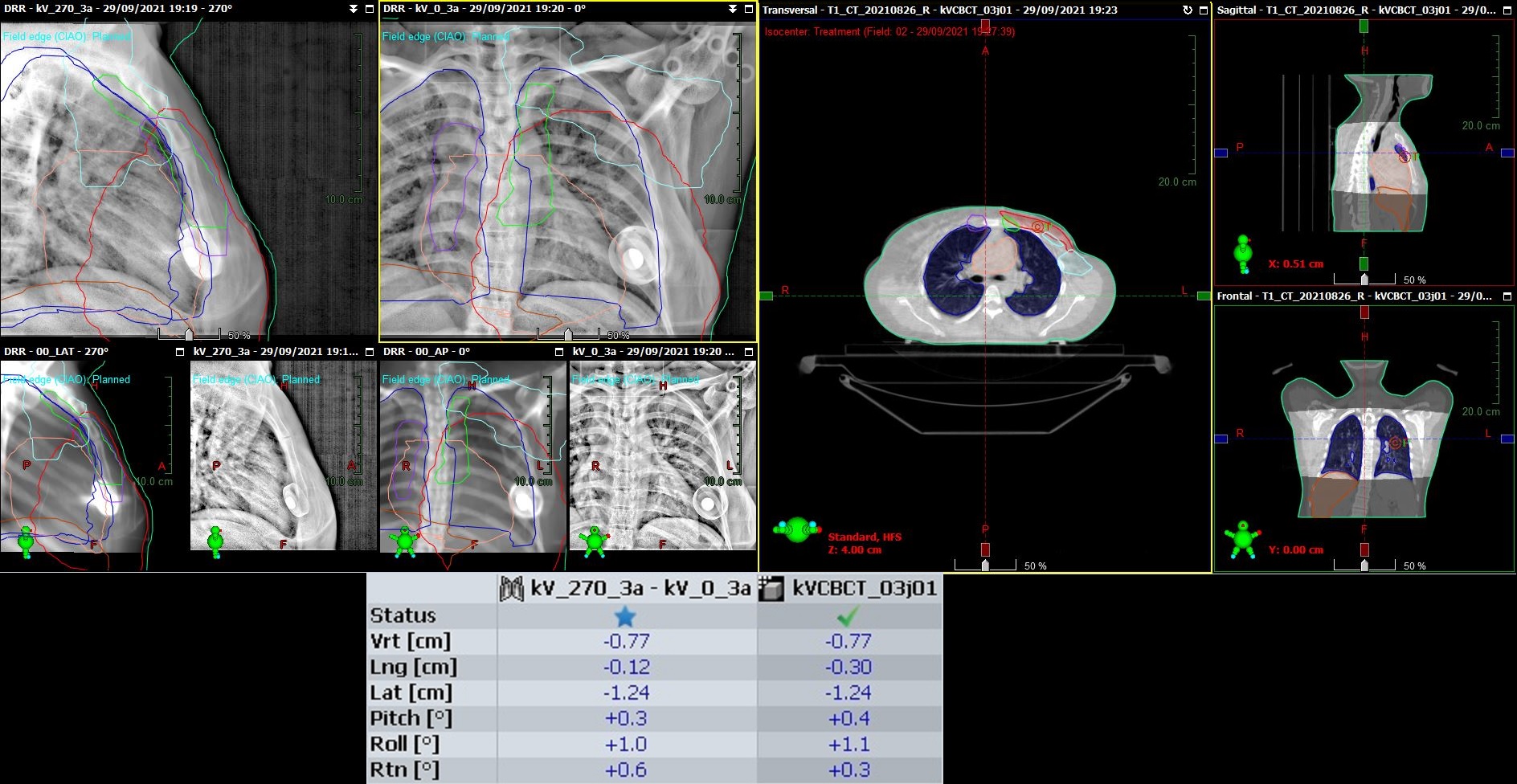Reliability of roll rotations estimated with paired kV imaging in thoracic treatments
PO-1842
Abstract
Reliability of roll rotations estimated with paired kV imaging in thoracic treatments
Authors: Maria Cuenca Cano1, Diego Jurado Bruggeman2, Ingrid Romera Martinez2, Roger Grebol Canal1
1Institut Català d'Oncologia, Radiotherapy Department, Girona, Spain; 2Institut Català d'Oncologia, Medical Physics and Radiation Protection Department, Girona, Spain
Show Affiliations
Hide Affiliations
Purpose or Objective
In thoracic treatments, patient setup can be verified using several image modalities. On the one hand, orthogonal paired kV images are fast to acquire and evaluate. They involve low doses and allow obtaining translations and rotations in the image direction, but roll rotations are estimated and might not be reliable enough. On the other hand, CBCT is considered the gold standard and can show all translations and rotations. Nevertheless, CBCT acquisition is more time-consuming and involves higher doses. The purpose of this work is to assess the reliability of roll estimations in paired kV imaging against CBCT in thorax location. Additionally, the other corrections were also evaluated.
Material and Methods
Five thorax patients were randomly selected (four breasts and one lymphoma). Patients were treated in a Varian TrueBeam accelerator with a 6D couch, and SGRT was used for patient positioning. Five sessions were considered for each patient. In each session, orthogonal paired kV imaging (lateral and posterior) and a CBCT (already required according to our imaging protocol) were acquired consecutively. Image registration was performed with Varian’s Offline Review application integrated in Aria, as shown in figure 1. For paired kV, it was based on bony structure (sternum, rib cage), and for CBCT the rib cage and the external contour were considered. All translations and rotations were recorded. The differences between both imaging modalities were analysed by using paired t-test, with a 99% significance level.
Results
The differences and the statistical analysis are presented in figure 2. Roll rotations estimated with both imaging modalities match. Translations coincide, and pitch rotations do not differ significantly. However, yaw rotations do not agree, probably due to different structures involved in image registration.
Conclusion
Roll rotations estimated by using paired kV imaging are reliable and can be applied without further considerations. Translations and pitch rotations also match CBCT, but yaw rotations may differ probably because of different image registration considerations.